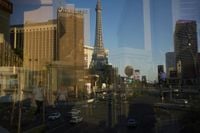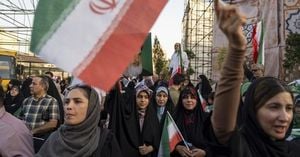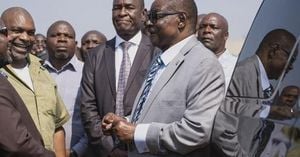Las Vegas, a city famed for its dazzling lights, high-stakes gaming, and endless entertainment, is facing a summer downturn that few expected. According to the Las Vegas Convention and Visitors Authority, just under 3.1 million tourists visited the city in June 2025—an 11% drop compared to the same month last year. The decline is even more pronounced among international travelers, who were down 13%, while hotel occupancy rates fell by about 15% compared to June 2024. These figures have sparked a flurry of debate and concern among city officials, business owners, and workers whose livelihoods depend on a steady stream of visitors.
Mayor Shelley Berkley did not mince words when describing the situation. She noted that tourism from Canada, long considered Nevada’s largest international market, has dried up from a torrent "to a drip." The same trend holds true for visitors from Mexico. “We have a number of very high rollers that come in from Mexico that aren’t so keen on coming in right now. And that seems to be the prevailing attitude internationally,” Berkley told reporters earlier this month, as reported by the Associated Press. The mayor also pointed to the rising cost of food, hotel rooms, and attractions as additional factors keeping would-be tourists at bay. “People are feeling that they’re getting nickeled and dimed, and they’re not getting value for their dollar,” she said, urging local businesses to “see if we can’t make it more affordable” for visitors. “And that’s all we want. We want them to come and have good time, spend their money, go home. Then come back in six months.”
But the reasons for the slump go beyond price hikes. Ted Pappageorge, head of the powerful Culinary Workers Union, has dubbed the downturn the "Trump slump." He attributes the sharp decline in visitors—especially from Southern California, which has a large Latino population—to fears over the Trump administration’s immigration crackdown. “If you tell the rest of the world they’re not welcome, then they won’t come,” Pappageorge said, echoing a sentiment that has been circulating among travel industry insiders and local leaders alike.
The impact of these policies is not just anecdotal. Airline data out of Canada, for example, paints a stark picture. In June 2025, Air Canada’s passenger numbers to Las Vegas fell by 33% compared to the previous year, WestJet saw a 31% drop, and the low-cost carrier Flair reported a staggering 62% decrease. Canadian travel agents have also reported a significant downturn in clients wanting to visit the U.S.—and Las Vegas in particular. Wendy Hart, a travel agent from Windsor, Ontario, told the Associated Press that the reason was “politics, for sure.” She added, “The tariffs are a big thing too. They seem to be contributing to the rising cost of everything.” Hart speculated that some Canadians are staying away out of “national pride” after President Donald Trump said he wanted to make Canada the 51st state.
At the Circa Resort and Casino in downtown Las Vegas, owner and CEO Derek Stevens confirmed that international visits, particularly from Canada and Japan, have dipped after a post-COVID spike. However, Stevens remains optimistic. While hotel bookings are slack, gaming numbers—especially for sports betting—are still robust. “It's not as if the sky is falling,” Stevens said. “Wealthier visitors are still coming, and we’ve introduced cheaper package deals to lure those with less money to spend. There have been many stories written about how the ‘end is near’ in Vegas. But Vegas continues to reinvent itself as a destination worth visiting.”
Despite these efforts, the city’s reputation as a top travel destination has taken a visible hit. On AAA's annual top ten list of Labor Day destinations, Las Vegas slipped this year to the last spot, down from number six in 2024. Seattle and Orlando, Florida—home to Disney World—held steady in the top two spots, with New York City climbing to third for 2025. This drop in rankings is a symbolic blow to a city that has long prided itself on its ability to attract visitors from around the globe.
Yet, the picture on the ground can seem contradictory. Alison Ferry, a tourist from Donegal, Ireland, arrived in Las Vegas in August 2025 and was surprised by the crowds. “It’s very busy. It has been busy everywhere that we’ve gone. And really, really hot,” Ferry said, noting that she doesn’t pay much attention to U.S. politics. Her experience highlights the unevenness of the downturn—while some attractions and areas may still draw large crowds, the overall numbers tell a different story.
Some local businesses appear to be weathering the storm better than others. Just off the Strip, the Pinball Museum, which showcases games from the 1930s through today, has seen no slowdown in visitors. Manager Jim Arnold credits its continued popularity to its unique business model. “We’ve decided that our plan is just to ignore inflation and pretend it doesn’t exist,” Arnold said. “So you still take a quarter out of your pocket and put it in a game, and you don’t pay a resort fee or a cancelation fee or any of that jazz.” He added that the museum’s free parking and admission make it a rare recession-proof attraction in a city otherwise known for expensive experiences. Still, Arnold isn’t surprised that overall tourism might be slowing, given the skyrocketing prices at high-end restaurants and resorts, which he says “squeezes out the low-end tourist.”
This squeeze is something Mayor Berkley has also observed. She believes that the rising cost of everything from hotel rooms to meals is deterring not just international visitors, but also Americans who might otherwise make the trip. The mayor has called on business owners to make Las Vegas more affordable, hoping to reverse the current trend and restore the city’s reputation as a welcoming destination for all.
Looking at the data and the stories from those on the ground, it’s clear that Las Vegas is at a crossroads. The city’s resilience and ability to reinvent itself are being put to the test once again. While some, like Derek Stevens, remain hopeful that Vegas will continue to draw visitors with new deals and experiences, others warn that without changes—both in national policy and local pricing—the city could face a longer-term challenge.
For now, the neon lights still shine bright, and the slot machines continue to ring. But behind the glitz and glamour, Las Vegas is grappling with a very real and complex downturn—one that has many searching for answers, and hoping for a return to the boom times that once seemed as endless as the city’s famous nights.




